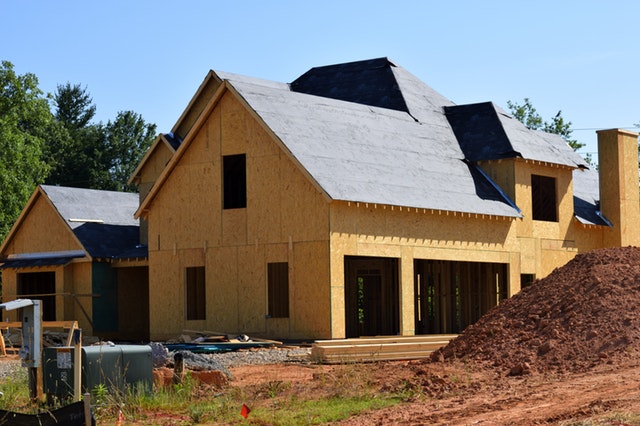 If you’ve just moved into your new home and you have a pet, you may be thinking of installing a pet door. A pet door is a permanent door feature that is cut into the bottom third of an entry door. Before making a permanent alteration to your door, consider the pros and cons of installing a pet door.
If you’ve just moved into your new home and you have a pet, you may be thinking of installing a pet door. A pet door is a permanent door feature that is cut into the bottom third of an entry door. Before making a permanent alteration to your door, consider the pros and cons of installing a pet door.
Pro: Your Pet Can Come And Go As Needed
A pet door could cut down on indoor pet accidents if that’s a problem you’ve had to deal with in the past. This is especially convenient if you get home late to let the dog out, or if they have a temporary gastric illness that requires more frequent outings.
Con: An Unwanted Visitor Could Get Inside
Pet doors are designed to give egress to pets, but your pet door might give indoor access to an unwanted animal. It’s not common, but it does occur, particularly in areas where wildlife is abundant.
Pro: You Could Do Without A Litter Box
Cats can be trained to go outdoors instead of using a litter box. With a pet door, you can dispense with the odorous litter box entirely, knowing your cat will always be able to take care of business outside.
Con: It’s Something Else You Must Remember To Lock
Most pet doors have a locking mechanism for times when you need to secure the home, such as at night. But this is just one more thing you’ll have to remember to do, along with setting the alarm and locking windows. And, the more you have to remember, the more you could forget.
Pro: Better Energy Efficiency
Anyone with pets knows that they can ask to go out and come back in numerous times per day. Every time you open the door you’re letting hot air in, cooled air out, or vice versa. With a pet door, your conditioned air stays in the home much better because there’s a smaller opening, and less time spent with the door open.
Con: New Homebuyers Might Not Want It
If you ever sell your home, the new homebuyers might see a pet door as a negative. Since a quality new door costs around $500, they could ask for a price discount on the home purchase.
A pet door can be a huge convenience, but there are some drawbacks as you can see. However, depending on your view (and the opinion of your pet!) the pros may outweigh the cons.
If you are interested in buying a new home or listing your current property, be sure to contact your trusted real estate professional.
 Have you ever played the classic board game called Monopoly? The object of the game is to collect all the properties until one winner bankrupts all the other players. The other part of the game is that accumulating properties adjacent to each other increases the value of the individual properties. When a player acquires all the properties of the same color (two or three), then the rents go up and property development can begin.
Have you ever played the classic board game called Monopoly? The object of the game is to collect all the properties until one winner bankrupts all the other players. The other part of the game is that accumulating properties adjacent to each other increases the value of the individual properties. When a player acquires all the properties of the same color (two or three), then the rents go up and property development can begin. Home Builder sentiment rose one point in July according to the National Association of Home Builders Housing Market Index. 2019 builder confidence in housing market condition continued to fall short of 2018 levels. July’s Housing Market Index reading of 65 was one point higher than June’s reading.
Home Builder sentiment rose one point in July according to the National Association of Home Builders Housing Market Index. 2019 builder confidence in housing market condition continued to fall short of 2018 levels. July’s Housing Market Index reading of 65 was one point higher than June’s reading. The most expensive home sold in America, so far, was a New York penthouse that sold for $238 million in January 2019. It is on the top of a building that overlooks Central Park. The 26-story luxury condo building designed by Robert A. M Stern is nearly all sold out.
The most expensive home sold in America, so far, was a New York penthouse that sold for $238 million in January 2019. It is on the top of a building that overlooks Central Park. The 26-story luxury condo building designed by Robert A. M Stern is nearly all sold out. Last week’s economic releases included reports on inflation, core inflation and minutes from the Federal Open Market Committee Meeting held June 18 and 19. Weekly readings on mortgage rates and first-time jobless claims were also released.
Last week’s economic releases included reports on inflation, core inflation and minutes from the Federal Open Market Committee Meeting held June 18 and 19. Weekly readings on mortgage rates and first-time jobless claims were also released. For market value and the comfort of a home’s occupants, home security is just as important as energy-efficiency. Innovation in smart home technology focuses on both of these areas.
For market value and the comfort of a home’s occupants, home security is just as important as energy-efficiency. Innovation in smart home technology focuses on both of these areas.